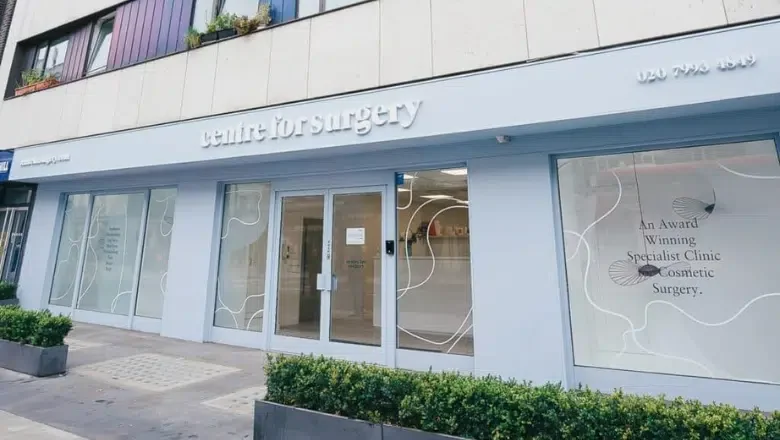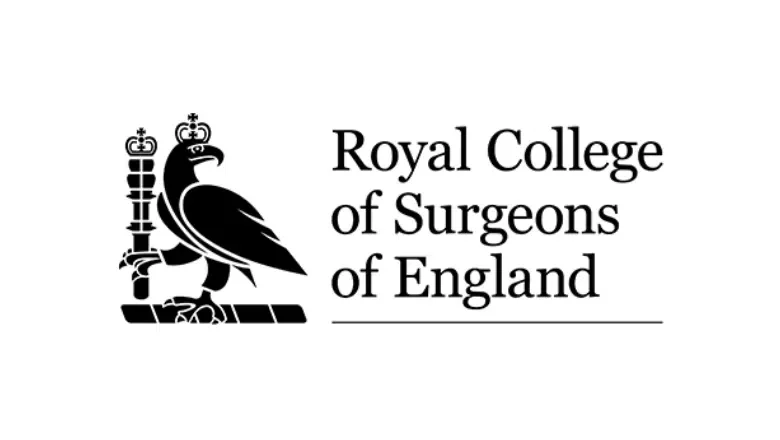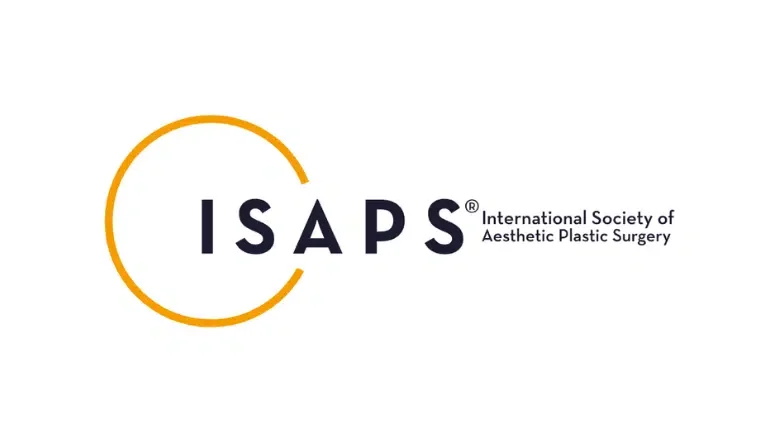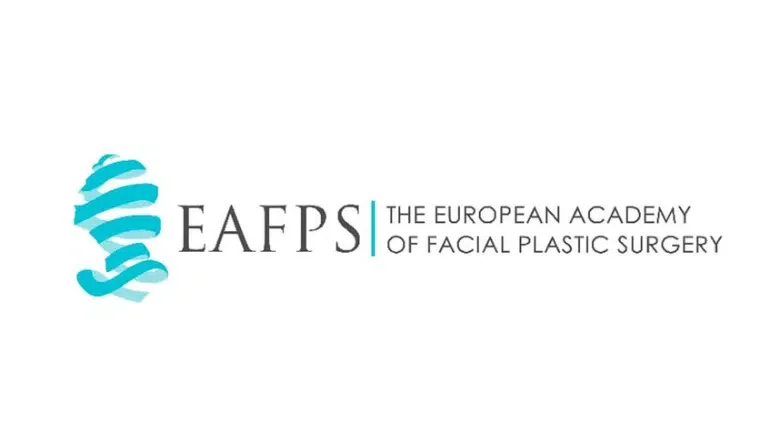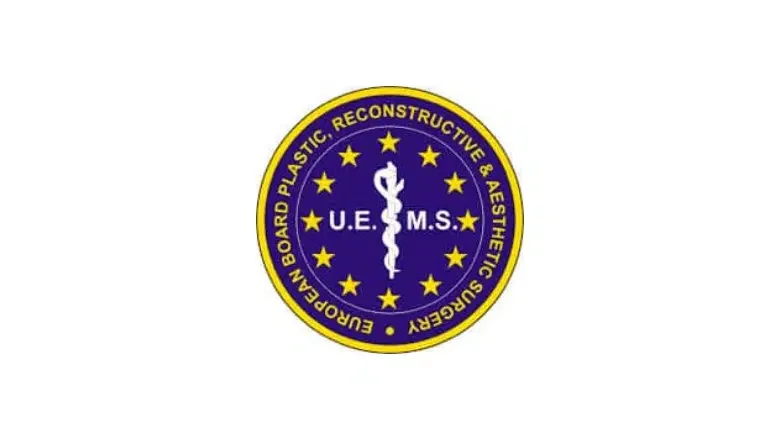Non Binary Surgery in London
Non-binary surgery refers to a range of gender-affirming procedures designed for individuals who do not identify exclusively as male or female. Unlike traditional gender-affirming surgeries that are often aimed at helping transgender individuals transition from one binary gender to the other, non-binary surgery is highly individualised. It is tailored to help people achieve an appearance that aligns with their unique gender identity, which may exist outside the conventional male-female spectrum.
For many non-binary individuals, gender expression does not conform to strict societal expectations of masculinity or femininity. Instead, their journey towards self-affirmation may involve a blend of physical modifications that best reflect their identity. Some may seek subtle changes, while others may choose more noticeable transformations. There is no single pathway to non-binary transition, and each person’s needs are unique.
At Centre for Surgery, we are home to highly specialist gender affirmation surgeons with vast experience in the full range of non-binary surgery.
Why Do People Choose Non-Binary Surgery?
Non-binary surgery is a deeply personal and transformative process that allows individuals to align their physical appearance with their gender identity. People who identify as non-binary do not feel connected to traditional binary gender categories of male or female. This disconnect can lead to gender dysphoria, a condition where an individual experiences distress due to a mismatch between their gender identity and the physical characteristics they were assigned at birth. Gender-affirming surgery offers a solution to help individuals feel more comfortable in their own bodies and can bring significant improvements in overall well-being.
RELATED: Evolution of Transgender Healthcare in the UK
The Impact of Gender Dysphoria
For many non-binary individuals, gender dysphoria can be an ongoing challenge that affects multiple aspects of life. This discomfort may stem from specific physical features, such as facial structure, chest shape, or genitalia, or it may be a more general sense of disconnection from one’s body. Gender dysphoria is not just about appearance; it can have profound psychological and emotional effects, leading to conditions such as anxiety, depression, and low self-esteem.
The presence of gender dysphoria can also impact daily activities and social interactions. Many non-binary individuals may feel uncomfortable wearing certain clothing, engaging in physical activities such as swimming, or being seen in public settings where their body shape may not reflect their identity. This can lead to isolation, a lack of participation in social or professional environments, and a decline in overall confidence and quality of life.
The Role of Gender-Affirming Surgery
Non-binary surgery offers a way to reduce or eliminate gender dysphoria by modifying physical characteristics that cause distress. These procedures are highly individualised, allowing each person to select the surgeries that best align with their identity and personal comfort. Some individuals may choose subtle changes, such as body contouring or facial surgery, while others may opt for more extensive procedures, such as top or bottom surgery.
The decision to undergo surgery is unique to each person, and not all non-binary individuals feel the need to alter their physical appearance. Some may find comfort through non-surgical means, such as hormone therapy, changes in clothing, or adjustments in social presentation. Others may combine medical and surgical interventions to achieve their ideal self-expression.
The Psychological and Emotional Benefits
For those who choose to undergo non-binary surgery, the benefits can be life-changing. Alleviating gender dysphoria can lead to improved mental health, increased confidence, and greater ease in social and personal interactions. Many individuals report feeling more at peace with their bodies, which allows them to engage more fully in life without the distress of dysphoria interfering with their daily experiences.
In addition to psychological relief, gender-affirming surgeries can help individuals feel safer in public and social settings. When their physical appearance aligns more closely with their identity, they may experience less misgendering, fewer intrusive questions, and a greater sense of belonging in their communities.
A Personalised Journey to Authenticity
The path to self-affirmation is different for every non-binary individual. Some may require only one surgical procedure, while others may opt for a combination of treatments to achieve their ideal body image. The decision to pursue surgery is deeply personal and should be made with careful consideration, often in consultation with medical professionals who specialise in gender-affirming care.
Options for Non-Binary Surgery
Non-binary surgery encompasses a variety of procedures designed to help individuals align their physical appearance with their gender identity. The specific surgeries chosen depend on personal preferences and the ways in which gender dysphoria manifests for each person. Since non-binary identities exist outside the conventional male-female spectrum, the surgical approach is highly individualised and tailored to the needs of the patient.
Non-Binary Top Surgery
Non-binary top surgery is a gender-affirming procedure that reshapes the chest contours to better align with an individual’s gender identity. Unlike traditional female-to-male (FTM) or male-to-female (MTF) top surgeries, which aim for a distinctly masculine or feminine appearance, non-binary top surgery is tailored to meet a diverse range of aesthetic goals. The procedure can involve the removal, reduction, or reshaping of breast tissue, as well as modifications to the nipples, depending on the patient’s unique preferences.
RELATED: What is Non-Binary Top Surgery?
Every non-binary individual has their own vision of how they want their chest to look. Some may seek a completely flat chest, but without the defined muscular appearance commonly associated with a masculine chest. Others may prefer a partial reduction of breast tissue rather than full removal, creating a more androgynous or neutral contour. The key focus of non-binary top surgery is to provide results that reflect the patient’s identity and comfort.
The appearance of the nipples and areolas is another area where non-binary top surgery differs from binary-oriented procedures. Some patients may choose to have their nipples and areolas completely removed, creating a smooth, undefined chest. Others may request changes in size, shape, or position to achieve a more subtle or androgynous look. These customisations allow each individual to achieve the aesthetic outcome that best matches their gender expression.
The placement of surgical incisions can vary based on the patient’s preferences and desired chest shape. Some individuals opt for incisions positioned below the chest, following the natural contour of the muscle border, while others may prefer incisions placed across the centre of the chest. The choice of incision technique is guided by factors such as skin elasticity, breast size, and the degree of tissue removal required to achieve the ideal chest contour.
RELATED: Benefits of Combining FTM Top Surgery with Chest Contouring
Non-binary top surgery can be performed as a day-case procedure at Centre for Surgery, allowing patients to return home on the same day. The surgery is carried out under general anaesthesia by highly skilled surgeons with extensive experience in gender-affirming procedures. A personalised consultation process ensures that each patient’s needs and expectations are fully understood, allowing for a tailored surgical plan that respects their gender identity.
As with any surgical procedure, recovery time varies depending on the extent of tissue removal and individual healing factors. Patients are provided with comprehensive aftercare instructions to support optimal healing and achieve the best possible results.
Non-Binary Facial Surgery
The face plays a crucial role in gender perception, and for many non-binary individuals, facial features can be a source of gender dysphoria. Various surgical options are available to refine and reshape different areas of the face, depending on the patient’s needs.
RELATED: Facial Feminisation Surgery (FFS)
Rhinoplasty for Facial Harmony
The nose is a central feature of the face and plays a significant role in overall facial harmony. For patients experiencing gender dysphoria due to the shape or size of their nose, rhinoplasty can be an effective solution. This procedure can:
- Reduce or enhance nasal projection.
- Refine the nasal tip for a softer or more structured appearance.
- Adjust the width or shape of the nose to create a more balanced profile.
Each rhinoplasty procedure is personalised, ensuring that the results complement the patient’s unique facial features.
Eye Area Surgery
Altering the eye area can refine the shape of the eyes and address specific concerns such as hooded eyelids or excess skin. Many non-binary patients choose to enhance the eyes in conjunction with other facial procedures for a balanced transformation.
- Upper or Lower Blepharoplasty – Removes excess skin or fat from the eyelids to create a more open and refreshed look.
- Canthopexy or Canthoplasty – Reshapes the outer corners of the eyes to create a more lifted or almond-shaped appearance.
These procedures can be performed alone or combined to achieve a customised and harmonious result.
Forehead and Brow Surgery
The forehead and brow region significantly contribute to facial gender perception. Surgical modifications can reshape the forehead, adjust the brow position, and refine the hairline to create a more androgynous or gender-neutral appearance.
- Brow Lift – Elevates the brows for a more open, lifted look.
- Forehead Reduction or Hairline Lowering – Reduces the height of the forehead or reshapes the hairline to alter facial proportions.
By modifying the forehead’s shape and size, non-binary individuals can achieve a look that feels more aligned with their gender identity.
Facelift for Contour Refinement
For some non-binary patients, a facelift can help refine facial contours by addressing sagging skin and enhancing definition. A facelift may be particularly beneficial for those concerned about excess skin or wanting a more youthful, sculpted appearance. The procedure can be tailored to create a balanced, natural result that aligns with the patient’s desired aesthetic.
Facial Fat Transfer for Volume and Shape
Facial fat transfer is an increasingly popular option for non-binary individuals seeking to add volume and definition to specific facial areas. This procedure involves transferring fat from another part of the body to enhance the cheeks, jawline, or temples. It provides a long-lasting alternative to dermal fillers and can help create a softer, fuller, or more sculpted appearance depending on the patient’s goals.
Chin and Jawline Contouring
Reshaping the chin and jawline can significantly impact the overall facial appearance. Some non-binary individuals may prefer a softer, more rounded jawline, while others may seek a more defined or angular shape. These changes can be achieved through different techniques:
- Chin Augmentation – Enhancing the projection or shape of the chin using implants or bone advancement.
- Chin Reduction – Reshaping or reducing the chin size for a more refined appearance.
Jaw contouring can involve bone reduction for a narrower jawline or the addition of implants to create more structure and definition. The specific approach depends on the patient’s desired aesthetic.
Non-Binary Body Surgery
Non-binary body surgery encompasses a variety of procedures that help individuals achieve a body shape that aligns with their gender identity. Since non-binary individuals may not conform to traditional male or female aesthetics, body contouring techniques can be customised to create a more androgynous, neutral, or uniquely personalised silhouette.
RELATED: Body Feminisation Surgery
RELATED: Body Masculinisation Surgery
Many non-binary patients seek body surgery to modify fat distribution, sculpt specific areas, or adjust their overall proportions to reflect their identity more accurately. The choice of procedures varies depending on each person’s goals and the extent of change they wish to achieve.
Liposuction for Body Contouring
Liposuction is a highly effective technique for reshaping the body by selectively removing fat from targeted areas. This procedure allows non-binary individuals to refine their body contours and achieve a more neutral or androgynous figure. Liposuction can help eliminate or redistribute fat in areas traditionally associated with masculine or feminine body shapes.
Common areas for liposuction among non-binary patients include:
- Chest – Reducing excess fat in the chest area for a flatter, less pronounced contour.
- Abdomen – Smoothing or sculpting the midsection to achieve a more neutral waistline.
- Flanks (Love Handles) – Reducing fat on the sides of the torso for a less curvaceous or more angular appearance.
- Thighs – Slimming the thighs to refine overall leg shape and proportions.
- Buttocks – Adjusting the volume or shape to achieve a more balanced and gender-neutral silhouette.
Liposuction can be performed alone or combined with other procedures for a more comprehensive transformation.
Fat Transfer for a Customised Body Shape
For some non-binary individuals, adjusting body proportions involves adding volume in certain areas rather than removing it. Fat transfer, also known as fat grafting, is a procedure where fat is first extracted using liposuction, processed, and then reinjected into specific body areas to enhance or modify their shape.
Fat transfer allows for natural body sculpting and can be used to:
- Modify Chest Volume – Some patients opt for subtle augmentation of the chest area without traditional breast implants, while others may prefer a flatter chest with additional sculpting.
- Refine the Waistline – Some patients prefer a straighter waist, while others may wish to enhance or reduce curves for a more androgynous appearance.
- Enhance or Reduce Hip Contours – Depending on personal preference, fat can be removed from or added to the hips to create a more neutral or tailored body shape.
- Reshape the Thighs – Adjusting fat distribution in the thighs can help create a more proportionate and personalised look.
Because fat transfer uses the patient’s own tissue, it provides natural-looking results that are long-lasting and customisable.
Benefits of Non-Binary Surgery
Non-binary surgery offers a range of benefits that can significantly enhance an individual’s physical, emotional, and psychological well-being. For those who choose to undergo gender-affirming procedures, these surgeries can play a crucial role in aligning their body with their gender identity, reducing discomfort, and improving overall quality of life. The decision to pursue surgery is deeply personal, and the benefits vary depending on each individual’s needs and goals.
Achieving Aesthetic and Gender Expression Goals
For many non-binary individuals, appearance plays a significant role in self-expression and identity. Gender-affirming surgeries allow patients to achieve their preferred look, whether that means a more androgynous appearance, a mix of traditionally masculine and feminine features, or a body shape that feels uniquely their own. These procedures can help individuals feel more comfortable in their skin, allowing them to present themselves in a way that feels true to their identity.
Surgical options, such as facial contouring, top surgery, and body sculpting, give patients greater control over their appearance, enabling them to achieve a physical look that aligns with their internal sense of self. This alignment can be empowering, giving individuals greater confidence in interacting with the world.
Reduction in Gender Dysphoria
One of the most significant benefits of non-binary surgery is its ability to alleviate gender dysphoria. Many non-binary individuals experience distress due to aspects of their physical body that do not align with their gender identity. This discomfort can be persistent and may lead to anxiety, depression, and reduced quality of life.
By modifying the areas of the body that cause dysphoria—such as the chest, face, or genitalia—gender-affirming surgery helps individuals feel more at ease in their own bodies. When the disconnect between physical features and gender identity is reduced, many people experience a profound sense of relief, enabling them to live more comfortably and authentically.
Increased Confidence and Improved Quality of Life
Feeling confident in one’s body has a direct impact on daily life. Non-binary individuals who undergo gender-affirming surgery often report feeling more comfortable in social settings, at work, and in personal relationships. With greater confidence, they may feel freer to engage in activities they previously avoided due to dysphoria, such as swimming, exercising, or wearing certain types of clothing.
Eliminating sources of distress and enhancing self-esteem can contribute to a better overall sense of well-being. Many individuals find that after surgery, they experience reduced anxiety, improved mental health, and a greater willingness to participate in social and professional activities without fear of being misgendered or misunderstood.
Who is Suitable for Non-Binary Surgery?
Non-binary surgery is a highly individualised process, and suitability for these procedures depends on several factors. Every non-binary person has unique needs, goals, and experiences, and a personalised consultation with a gender-affirming surgeon at our Baker Street clinic is essential to determine the best approach. The decision to undergo surgery is deeply personal, and the consultation process is designed to ensure that patients receive the most appropriate care based on their physical and emotional well-being.
Consultation and Assessment
During the initial consultation, your surgeon will assess your suitability for non-binary surgery by discussing your concerns, expectations, and desired results. This consultation provides an opportunity to explore different surgical options, understand potential outcomes, and create a treatment plan tailored to your specific needs. Some key factors your surgeon will consider include:
Gender Dysphoria and Medical History
Many non-binary individuals who pursue surgery experience gender dysphoria, a condition where there is a significant disconnect between one’s physical body and gender identity. While a formal diagnosis is not always required, some procedures may necessitate a referral from a gender specialist or mental health professional, particularly for more complex surgeries such as genital procedures.
Your surgeon will review your medical history to ensure you are physically and emotionally prepared for surgery. They may also discuss any previous treatments, such as hormone therapy or past surgical procedures, to gain a comprehensive understanding of your transition journey.
Areas of the Body Causing Dysphoria
Each non-binary person experiences gender dysphoria differently. Some may feel discomfort related to their chest, while others may wish to modify their facial features, body shape, or genitalia. Your consultation will focus on identifying the specific areas you wish to address and discussing the surgical techniques that can help you achieve your goals.
Since non-binary surgery is highly customisable, patients can choose a combination of procedures that align with their identity. Whether you are considering top surgery, facial surgery, body contouring, or another gender-affirming procedure, your surgeon will explain the options available and help you make an informed decision.
Realistic Expectations and Surgical Goals
Having realistic expectations is an important aspect of the surgical process. Your surgeon will discuss what can be achieved with non-binary surgery, taking into account factors such as skin elasticity, body proportions, and healing capabilities. They will also provide detailed information about the recovery process, potential risks, and long-term outcomes to ensure you clearly understand what to expect.
If you are interested in specific surgical techniques, such as keyhole incisions for top surgery or subtle facial modifications for an androgynous appearance, your surgeon will assess whether these options are suitable for your body and desired results. The goal is to create a treatment plan that aligns with your vision while maintaining safety and achieving the best possible outcome.
Non-Binary Surgery at Centre for Surgery: Personalised Gender-Affirming Care
At Centre for Surgery, we provide expert-led non-binary surgery tailored to each individual’s unique gender identity. Our highly experienced surgical team understands that gender-affirming procedures are deeply personal, and we are committed to delivering compassionate, high-quality care in a safe and supportive environment. Whether you seek top surgery, facial procedures, body contouring, or other gender-affirming treatments, we work closely with you to create a personalised surgical plan that aligns with your identity and goals.
Why Choose Centre for Surgery for Non-Binary Surgery?
With a reputation for excellence, Centre for Surgery is a leading plastic surgery clinic in London, offering advanced surgical techniques and patient-centred care. Our specialists have extensive experience in gender-affirming procedures and provide bespoke treatment plans tailored to your needs. From consultation to recovery, our team ensures you feel heard, respected, and supported throughout your journey.
Patient Testimonials: Real Stories of Transformation
⭐️⭐️⭐️⭐️⭐️ “A Life-Changing Experience”
“From my first consultation, I knew I was in the right place. The team at Centre for Surgery took the time to understand my goals and made me feel completely at ease. My non-binary top surgery has given me the confidence I never thought possible.” – Alex T.
⭐️⭐️⭐️⭐️⭐️ “Expert Care and Support”
“I had facial contouring at Centre for Surgery, and I couldn’t be happier with the results. The surgeons listened to exactly what I wanted and created a look that feels truly authentic to me. I highly recommend them to anyone considering non-binary surgery.” – Jamie L.
⭐️⭐️⭐️⭐️⭐️ “A Professional and Understanding Team”
“Every step of my journey was handled with professionalism and care. The team really understands the needs of non-binary individuals, and my surgery has helped me feel more comfortable in my body than ever before.” – Morgan S.
Book Your Consultation
If you are considering non-binary surgery, we invite you to book a consultation with one of our expert surgeons. During your appointment, we will discuss your concerns, explore surgical options, and create a tailored treatment plan to help you achieve your desired results.
📞 Phone: 0207 993 4849
📧 Email: contact@centreforsurgery.com
📍 Clinic Address: 95-97 Baker Street, London W1U 6RN
🔗 Book Your Consultation: Contact Us
Learn More About Centre for Surgery
For more information about our team, clinic, and services, visit the links below:
👉 Why Choose Us? Learn More
👉 Meet Our Team of Surgeons: Our Specialists
👉 Finance Options & 0% APR Financing: Flexible Payment Plans
👉 Plastic Surgery Blog: Read the Latest Articles
👉 Clinic FAQs: Your Questions Answered
👉 Baker Street Clinic: Find Us
At Centre for Surgery, we are dedicated to providing exceptional non-binary surgery services in a professional, welcoming, and affirming environment. Contact us today to take the next step towards a more confident and comfortable you.
FAQs
-
Which gender-affirming surgeries are suitable for a non-binary person?The decision to undergo gender-affirming surgery is highly personal, and there is no single approach that suits everyone. Some non-binary individuals choose surgery as a way to ease gender dysphoria, while others may feel comfortable without any surgical changes. The choice depends entirely on how someone feels about their body and the extent to which their physical features impact their sense of identity. Each person’s experience is unique, and surgery is just one of many ways to express and affirm gender identity.
-
How can I decide which non-binary surgeries are right for me?Some people have a clear idea of which surgical procedures they need to alleviate gender dysphoria, while others may be unsure about the best options for them. If you are uncertain, the best step is to arrange a consultation with a gender-affirming surgeon who specialises in non-binary procedures. At Centre for Surgery, our expert consultants take the time to discuss your concerns, explore different surgical possibilities, and guide you through the decision-making process. The goal is to help you make an informed choice that aligns with your gender identity and personal comfort.
-
How long does it take to recover from non-binary surgery?The recovery period following non-binary surgery varies depending on the type of procedure performed and the techniques used. In most cases, patients are able to move around within a day after surgery, although full recovery can take up to six weeks. Those who undergo top surgery, for example, will need to follow post-operative care guidelines to ensure the best possible healing. Your surgical team will provide personalised aftercare advice to help you manage recovery effectively and return to daily activities at a safe and steady pace.


